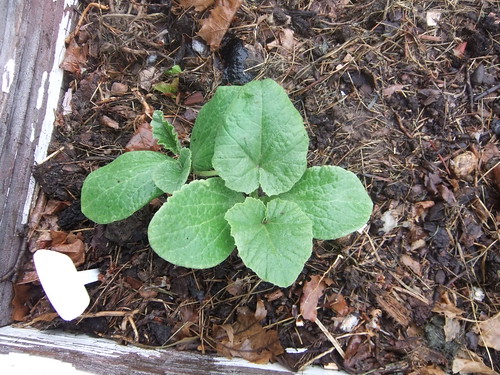Post by keen101 (Biolumo / Andrew B.) on Jun 3, 2017 17:23:26 GMT -5
found some interesting info today. Are you working with S. sitiens and S. lycopersicoides? Because apparently they have scented flowers....
vanderknaaplab.uga.edu/files/Bedinger_Sex_Plant_Review.pdf
link.springer.com/article/10.1007%2Fs10681-008-9863-6?LI=true
vanderknaaplab.uga.edu/files/Bedinger_Sex_Plant_Review.pdf
link.springer.com/article/10.1007%2Fs10681-008-9863-6?LI=true
Variation in mating systems and correlated floral traits
in the tomato clade
The wild relatives of the cultivated tomato provide a
great diversity in mating systems and reproductive biology
(Rick 1988). Several species, including cultivated tomato,
S. lycopersicum (formerly Lycopersicon esculentum), are
autogamous, i.e. self-compatible (SC) and normally selfpollinating
(Table 1). They bear small- to modest-sized
flowers, on mostly simple and short inflorescences; their
corolla segments are relatively pale colored, the anthers
short, and the stigma surface does not protrude (exsert) far
beyond the tip of the anther cone, all traits that promote
self-pollination and discourage outcrossing.
At the other end of the spectrum are several allogamous
(outcrossing) species. These taxa are all self-incompatible
(SI) and have floral traits that promote cross-pollination,
including large, highly divided inflorescences, brightly
colored petals and anthers, and exserted stigmas. This
group includes two pairs of sister taxa—S. juglandifolium
and S. ochranthum, and S. lycopersicoides and S. sitiens—
that are closely allied with the tomato clade, but are classified
in two other sections of the genus (Peralta et al.
2008). All four of these tomato allies have unique floral
traits that set them apart from the tomatoes: anthers lack
the sterile appendage typical of tomato flowers, pollen is
shed via terminal anther pores instead of through longitudinal
slits, anthers are unattached rather than fused, and
flowers are noticeably scented (Chetelat et al. 2009). It
should be noted that S. pennellii lacks the sterile appendage
and has terminal pollen dehiscence, but in all other respects
more closely resembles the other members of the tomato
clade.
Between these extremes are two groups of species with
facultative mating systems. The first group, which includes
S. pimpinellifolium and S. chmielewskii, is SC but their
floral structures promote outcrossing. Within S. pimpinellifolium,
there is significant variation in both flower size
and outcrossing rate. Under field conditions with native bee
pollinators, the rate of outcrossing in S. pimpinellifolium
was positively correlated with anther length and stigma
exsertion (Rick et al. 1978).
in the tomato clade
The wild relatives of the cultivated tomato provide a
great diversity in mating systems and reproductive biology
(Rick 1988). Several species, including cultivated tomato,
S. lycopersicum (formerly Lycopersicon esculentum), are
autogamous, i.e. self-compatible (SC) and normally selfpollinating
(Table 1). They bear small- to modest-sized
flowers, on mostly simple and short inflorescences; their
corolla segments are relatively pale colored, the anthers
short, and the stigma surface does not protrude (exsert) far
beyond the tip of the anther cone, all traits that promote
self-pollination and discourage outcrossing.
At the other end of the spectrum are several allogamous
(outcrossing) species. These taxa are all self-incompatible
(SI) and have floral traits that promote cross-pollination,
including large, highly divided inflorescences, brightly
colored petals and anthers, and exserted stigmas. This
group includes two pairs of sister taxa—S. juglandifolium
and S. ochranthum, and S. lycopersicoides and S. sitiens—
that are closely allied with the tomato clade, but are classified
in two other sections of the genus (Peralta et al.
2008). All four of these tomato allies have unique floral
traits that set them apart from the tomatoes: anthers lack
the sterile appendage typical of tomato flowers, pollen is
shed via terminal anther pores instead of through longitudinal
slits, anthers are unattached rather than fused, and
flowers are noticeably scented (Chetelat et al. 2009). It
should be noted that S. pennellii lacks the sterile appendage
and has terminal pollen dehiscence, but in all other respects
more closely resembles the other members of the tomato
clade.
Between these extremes are two groups of species with
facultative mating systems. The first group, which includes
S. pimpinellifolium and S. chmielewskii, is SC but their
floral structures promote outcrossing. Within S. pimpinellifolium,
there is significant variation in both flower size
and outcrossing rate. Under field conditions with native bee
pollinators, the rate of outcrossing in S. pimpinellifolium
was positively correlated with anther length and stigma
exsertion (Rick et al. 1978).
Another striking difference is that flowers of S. sitiens and S. lycopersicoides are strongly scented, whereas those of S. chilense and S. peruvianum—like all other members of Solanum sect. Lycopersicon—have no obvious odor (Table 3). The production of volatile scent compounds presumably serves to attract insect pollinators, perhaps a broader suite of bee species or other types of insects. Interestingly, the floral scent of S. sitiens, a ‘mothball-like’ odor, is noticeably different from that of S. lycopersicoides, which is more reminiscent of honey or nectar.





